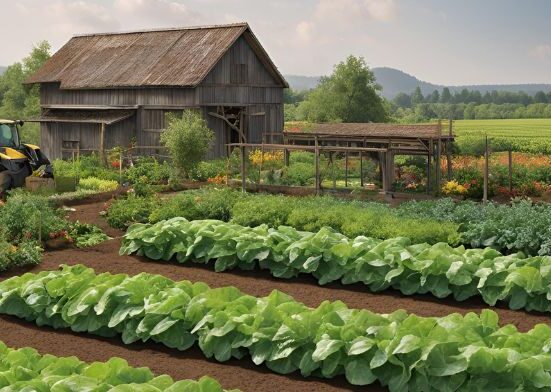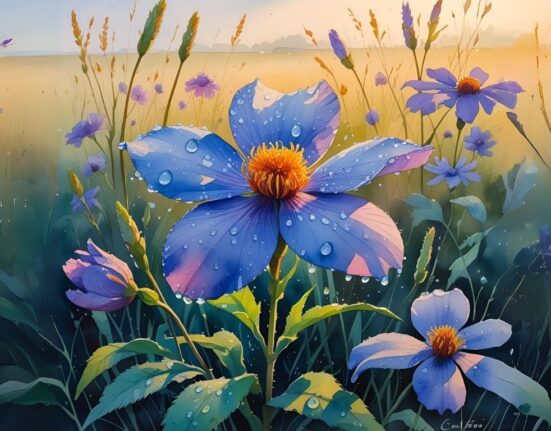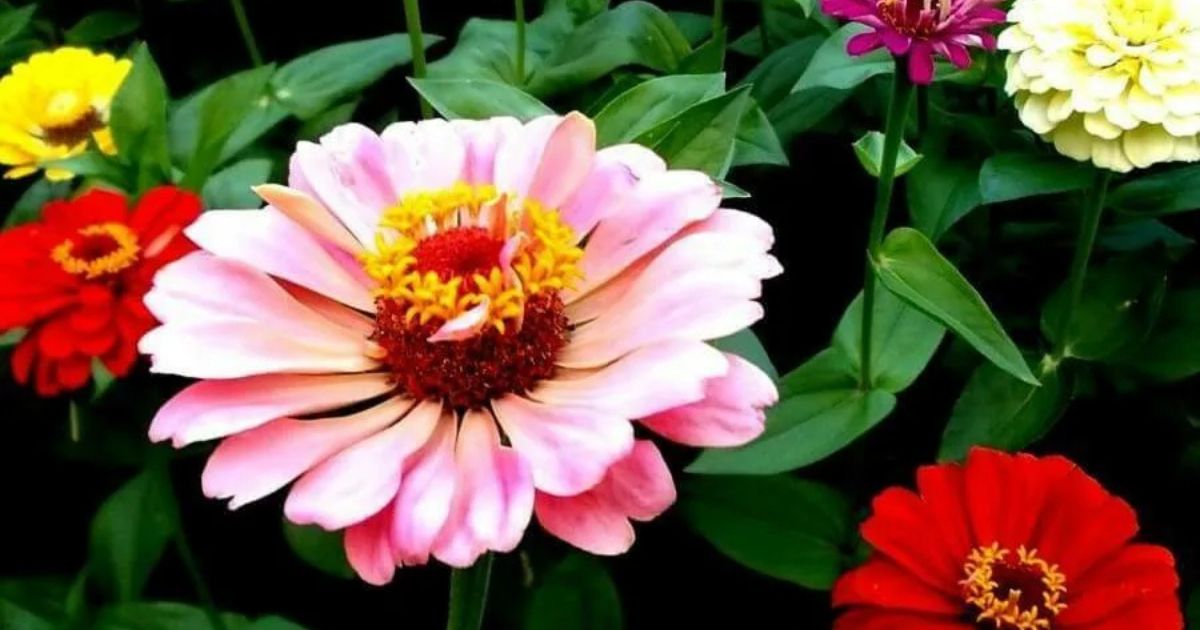Zinnias are among the most vibrant and versatile flowers you can grow in your garden. Known for their dazzling array of colors—reds, pinks, yellows, oranges, purples, and whites—these annuals are a favorite for gardeners seeking low-maintenance plants that deliver a burst of beauty all summer long. Whether you’re a seasoned gardener or a beginner with a budding interest in plants, zinnias are an excellent choice due to their ease of growth, adaptability, and ability to attract pollinators like butterflies and bees. In this comprehensive guide, we’ll walk you through everything you need to know about planting and caring for zinnias to ensure your garden is filled with bright summer blooms.
Will cover the essentials of growing zinnias, including choosing the right varieties, preparing your garden, planting seeds or seedlings, and maintaining healthy plants. We’ll also explore tips for extending the blooming season, companion planting, and troubleshooting common issues. By the end, you’ll have a clear roadmap to cultivate a stunning zinnia garden that will be the envy of your neighborhood.
Why Choose Zinnias?
Zinnias are a top choice for gardeners who want bold, vibrant color with minimal fuss. These cheerful flowers bloom in a rainbow of shades—reds, pinks, oranges, yellows, purples, and even green—making them perfect for brightening up garden beds, borders, and containers. They’re easy to grow from seed, thrive in full sun, and bloom continuously from early summer until frost. Zinnias also attract pollinators like butterflies and bees, adding life and motion to your garden. With varieties ranging from compact to types of zinnias tall and elegant, there’s a zinnia for every garden style. Their long-lasting blooms make excellent cut flowers, ideal for fresh zinnia flower arrangements.
Plus, zinnias are heat- and drought-tolerant, making them a hardy option for summer gardens. Whether you’re a beginner or an experienced gardener, zinnias offer reliable, low-maintenance beauty with high-impact results. Choose zinnias for a how to plant zinnias stunning display that keeps on giving all season long.
Choose the Right Zinnia Varieties
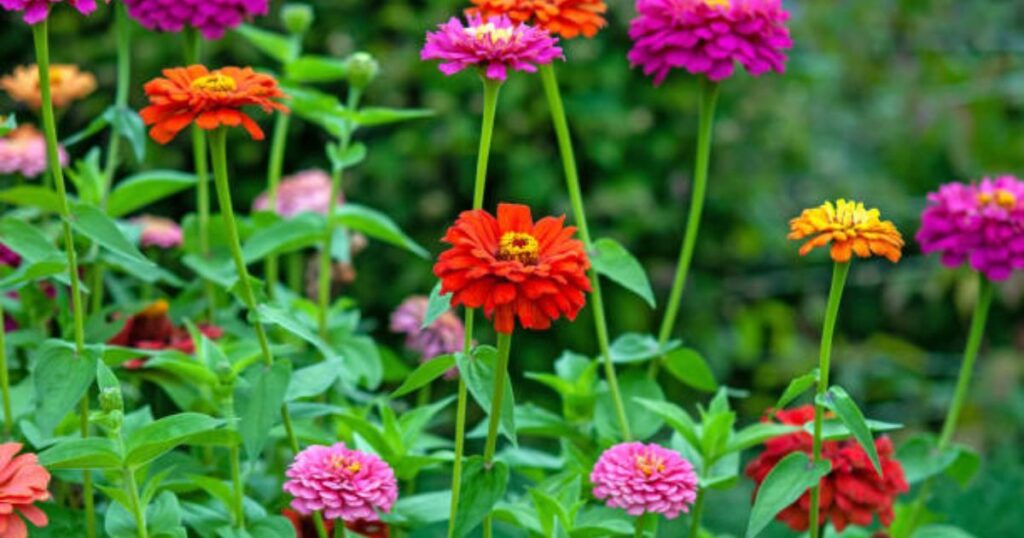 Selecting the right zinnia variety is key to creating a vibrant, long-lasting summer display. Zinnias come in a wide range of sizes, shapes, and colors—perfect for flower beds, borders, or containers. For tall, statement blooms, try Zinnia elegans, which produces large, dahlia-like flowers ideal for cutting gardens. If you prefer compact plants, go with Zinnia angustifolia or the Profusion and Zahara series, known for their disease resistance and mounded growth, perfect for small spaces or edging. For bold color blends, consider the Giant planting zinnia seeds, Cactus, or State Fair mixes.
Selecting the right zinnia variety is key to creating a vibrant, long-lasting summer display. Zinnias come in a wide range of sizes, shapes, and colors—perfect for flower beds, borders, or containers. For tall, statement blooms, try Zinnia elegans, which produces large, dahlia-like flowers ideal for cutting gardens. If you prefer compact plants, go with Zinnia angustifolia or the Profusion and Zahara series, known for their disease resistance and mounded growth, perfect for small spaces or edging. For bold color blends, consider the Giant planting zinnia seeds, Cactus, or State Fair mixes.
Gardeners looking to attract butterflies should choose single or semi-double bloom types like Cut and Come Again or Lilliput, which offer easier nectar access. Climate, garden space, and purpose—cut flowers, pollinator support, or aesthetic appeal—should all guide your selection. With the right variety, your zinnias will october flower reward you with a planter zinnia spectacular burst of color all season long.
Popular Zinnia Varieties
- Zinnia elegans: The most common species, known for large, showy blooms. Popular cultivars include:
- ‘State Fair Mix’: Tall (3–4 feet), with large, double blooms in a mix of colors.
- ‘Lilliput’: Dwarf variety (12–18 inches) with small, pom-pom-like flowers.
- ‘Cut and Come Again’: Ideal for cutting gardens, with continuous blooms.
- Zinnia angustifolia: Narrow-leaved zinnias, more compact and drought-tolerant. Examples include:
- ‘Crystal White’: Small, white blooms on bushy plants.
- ‘Star Orange’: Bright orange flowers on low-growing plants.
- Zinnia haageana: Known for smaller, more delicate blooms, such as the ‘Persian Carpet’ mix with bicolor flowers.
Factors to Consider
- Height: Choose dwarf varieties for containers or borders, and taller ones for backdrops or cutting gardens.
- Bloom Type: Single blooms have a single layer of petals, while double blooms are fuller and more layered.
- Color: Pick a color scheme that complements your garden or go for a vibrant mix.
- Purpose: Decide if you want zinnias for cut flowers, pollinator attraction, or purely ornamental purposes.
For beginners, a mix like ‘California Giants’ or ‘Zowie! Yellow Flame’ offers a range of colors and heights, making it easy to experiment.
Plan Your Planting Time
Timing is everything when it comes to gardening success. Planning your planting time ensures your flowers, vegetables, and herbs thrive in the right conditions. Understanding your local climate, frost dates, and growing seasons helps you decide when to sow seeds or transplant seedlings. For cool-season crops like lettuce or spinach, early spring or fall is ideal, while heat-loving plants such as tomatoes, peppers, and zinnias prefer the warmth of late spring or early varieties of zinnias best flowers for window boxes summer.
Pay attention to seed packets or plant tags—they often include optimal planting windows. Using a planting calendar or gardening app can simplify the process and prevent missed opportunities. Whether you’re growing in-ground, in containers, or raised beds, thoughtful scheduling can mean the difference between a bountiful harvest and a failed crop. With a bit of preparation, you’ll set your garden up for a vibrant, productive season from the very start.
When to Plant Zinnias
- After the Last Frost: Zinnias are sensitive to frost, so wait until all danger of frost has passed in your area. In most regions, this is late spring to early summer (April to June).
- Soil Temperature: Zinnias germinate best when soil temperatures are between 70°F and 80°F (21°C–27°C). Use a soil thermometer to check if you’re unsure.
- Indoor Starting: If you want a head start, you can sow seeds indoors 4–6 weeks before the last frost and transplant seedlings outdoors once the weather varieties of zinnias warms.
Check your local frost dates using a gardening calendar or online resources like the Old Farmer’s Almanac. For example:
- In USDA Hardiness Zones 3–5: Plant in late May or early June.
- In Zones 6–8, Mid to late April is often safe.
- In Zones 9–11, Zinnias can be planted almost year-round, avoiding extreme heat.
Select the Perfect Location
Choosing the perfect location is a crucial first step for any project, whether it’s gardening, building, or setting up a workspace. The right spot should offer ideal conditions tailored to your needs—think about sunlight, soil quality, drainage, and accessibility for gardening, or convenience and safety for other uses. Consider the environment: is it sheltered from harsh winds or extreme temperatures? Proximity to how to plant zinnias water sources or utilities can also play a significant zinnia companion plants role.
Evaluate the terrain carefully; a level area may simplify construction, while a sloped site might offer better drainage. Don’t forget about future growth—choose a location that allows flexibility and expansion if needed. Taking time to select the best location will save effort and resources down the line, ensuring your project thrives in the most supportive setting what not to plant with zinnias possible.
Sunlight
- Zinnias require full sun, meaning at least 6–8 hours of direct sunlight daily. A sunny, south-facing spot is ideal.
- Avoid shady areas, as insufficient light can lead to leggy plants and fewer blooms.
Soil
- Zinnias prefer well-draining soil with a pH between 5.5 and 7.5 (slightly acidic to neutral).
- They’re adaptable to various soil types, including sandy or loamy soils, but avoid heavy clay that retains water.
- If your soil is poor, amend it with compost or organic matter to improve fertility and drainage.
Space
- Consider the mature size of your chosen zinnia variety. Space plants 6–18 inches apart, depending on their size:
- Dwarf zinnias: 6–12 inches apart.
- Medium varieties: 12–15 inches apart.
- Tall varieties: 15–18 inches apart.
- Proper spacing ensures good air circulation, reducing the risk of fungal diseases.
If planting in containers, choose pots at least 12 inches deep with drainage holes to prevent root rot.
Prepare the Soil
Healthy soil sets the foundation for thriving zinnias. Follow these steps to prepare your planting area:
- Test the Soil: Use a soil test kit to check pH and nutrient levels. Adjust the pH with lime (to raise) or sulfur (to lower) if needed.
- Loosen the Soil: Dig or till the soil to a depth of 8–12 inches to promote root growth. Remove rocks, weeds, and debris.
- Amend the Soil: Mix in 2–4 inches of To improve the soil, add compost or well-rotted manure. This improves fertility and drainage.
- Level the Surface: Rake the soil to create a smooth, even surface for planting.
For container gardening, use a high-quality potting mix with good drainage, and consider adding perlite or vermiculite to enhance aeration.
Planting Zinnias
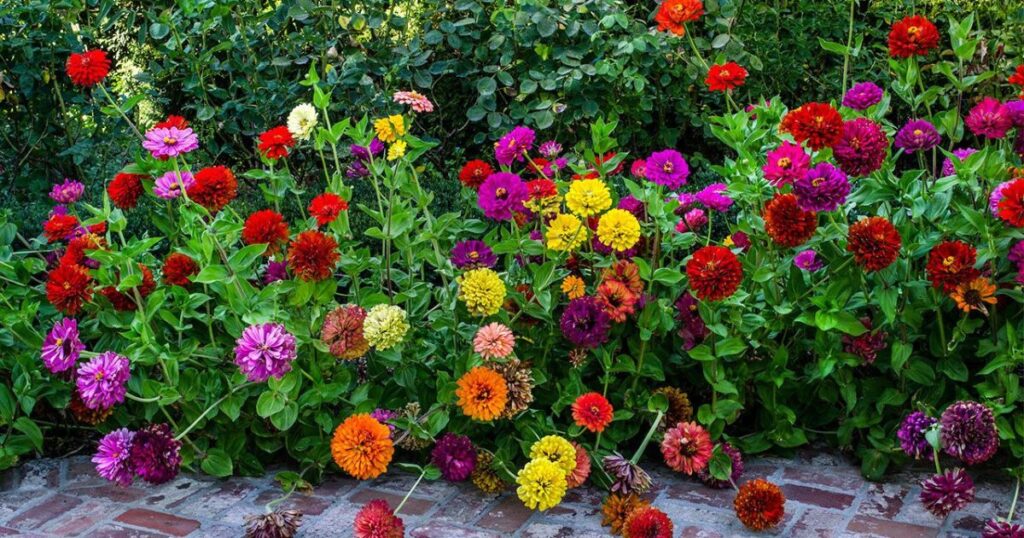 Planting zinnias is a rewarding and straightforward way to add vibrant color to your garden. These cheerful, daisy-like flowers thrive in full sun and well-drained soil. To start, choose a sunny spot and prepare the soil by loosening it and mixing in compost for extra nutrients. Zinnia seeds can be sown directly outdoors after the last frost, zinnia garden ideas about a quarter-inch deep and spaced 6 to 18 inches apart, depending on the variety. Until seedlings appear, which typically takes five to ten days, keep the soil moist. Zinnias prefer warm weather and flourish with regular watering—aim for deep, infrequent watering to encourage strong roots.
Planting zinnias is a rewarding and straightforward way to add vibrant color to your garden. These cheerful, daisy-like flowers thrive in full sun and well-drained soil. To start, choose a sunny spot and prepare the soil by loosening it and mixing in compost for extra nutrients. Zinnia seeds can be sown directly outdoors after the last frost, zinnia garden ideas about a quarter-inch deep and spaced 6 to 18 inches apart, depending on the variety. Until seedlings appear, which typically takes five to ten days, keep the soil moist. Zinnias prefer warm weather and flourish with regular watering—aim for deep, infrequent watering to encourage strong roots.
Deadheading spent flowers will promote continuous blooming throughout summer and into early fall. These low-maintenance plants are excellent for borders, containers, and cut flower gardens, making them a perfect choice for gardeners queen lime zinnia seeking bright, long-lasting blooms with minimal effort.
Planting Zinnia Seeds
- Sow Directly: After the last frost, sow seeds directly in the garden.
- Scatter seeds lightly over the prepared soil or plant them in rows.
- Sow seeds ¼ inch deep and cover lightly with soil.
- Space seeds according to the variety’s requirements (6–18 inches apart).
- Water Gently: Use a watering can with a delicate rose or a gentle hose setting to moisten the soil without disturbing the seeds.
- Germination: Seeds typically germinate in 5–10 days under optimal conditions (70°F–80°F soil temperature).
Transplanting Seedlings
- Start Indoors (Optional): Sow seeds in peat pots or seed trays 4–6 weeks before the last frost. Please keep them in a warm, sunny spot and water lightly.
- Harden Off: Before transplanting, acclimate seedlings to outdoor conditions over 7–10 days by gradually increasing their exposure to sunlight and wind.
- Plant Outdoors: Dig holes slightly larger than the root ball, place seedlings in the holes, and backfill with soil. Water thoroughly.
Tips for Success
- Thin seedlings to the recommended spacing once they’re 2–3 inches tall to prevent overcrowding.
- Label your planting areas if you’re growing multiple varieties to track their progress.
Care and Maintenance
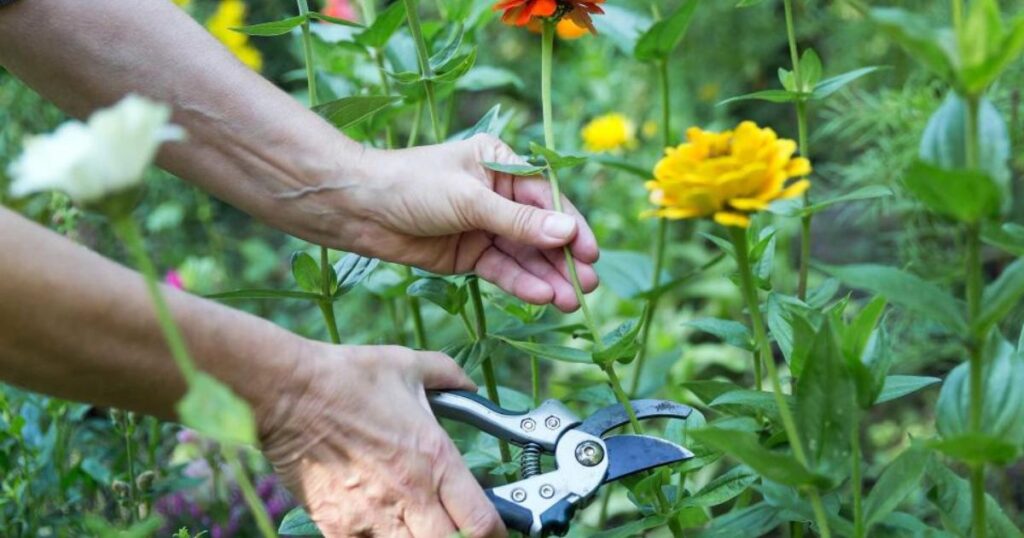 Care and maintenance are essential practices to ensure the longevity and optimal performance of your belongings, whether plants, tools, or household items. Regular attention helps prevent damage and promotes durability. For plants, this includes proper watering, sunlight exposure, pruning, and protection from pests. Tools and equipment require cleaning, lubrication, and safe storage to avoid rust and zinnia colors wear.
Care and maintenance are essential practices to ensure the longevity and optimal performance of your belongings, whether plants, tools, or household items. Regular attention helps prevent damage and promotes durability. For plants, this includes proper watering, sunlight exposure, pruning, and protection from pests. Tools and equipment require cleaning, lubrication, and safe storage to avoid rust and zinnia colors wear.
Routine checks allow early detection of issues, saving time and money on repairs. In daily life, simple habits like gentle handling, timely cleaning, and using appropriate products extend the life of your possessions. Overall, consistent care and maintenance create a healthier environment, enhance functionality, and preserve zinderella zinnia appearance, making your investments worthwhile and reliable over time.
Watering
- Frequency: Water deeply but infrequently, aiming for 1 inch of water per week, including rainfall. Avoid overhead watering to keep foliage dry.
- Morning Watering: Watering in the morning lowers the danger of fungal diseases by allowing leaves to dry before nighttime.
- Container Zinnias: Check pots daily, as they dry out faster. Water when the top inch of soil feels dry.
Fertilizing
- Zinnias aren’t heavy feeders, but a balanced fertilizer (e.g., 10-10-10) applied every 4–6 weeks can boost growth.
- Alternatively, every two weeks throughout the growing season, use a liquid fertilizer that has been diluted to half strength.
- Avoid over-fertilizing, as too much nitrogen can lead to lush foliage but fewer flowers.
Deadheading
- To promote continual blossoming, remove spent blooms regularly. Just above a leaf node, trim faded blossoms with clean, sharp scissors.
- Deadheading prevents the plant from diverting energy to seed production, promoting more blooms.
Staking (for Tall Varieties)
- Tall zinnias (e.g., ‘State Fair’) may need support to prevent flopping in windy conditions.
- Insert bamboo stakes or plant supports near the base of the plant and tie loosely with garden twine.
Pest and Disease Management
Zinnias are generally hardy, but they can face a few challenges:
- Pests:
- Aphids: Spray with a strong jet of water or use insecticidal soap.
- Spider Mites: Increase humidity and use neem oil if infestations persist.
- Diseases:
- Powdery Mildew: White, powdery spots on leaves. Improve air circulation and apply a fungicide if needed.
- Bacterial Wilt: Wilting despite adequate water. Remove and destroy affected plants to prevent the spread.
- Regular monitoring and good cultural practices (e.g., proper spacing, avoiding wet foliage) can prevent how to plant zinnias most issues.
Extend the Blooming Season
Extending the blooming season allows gardeners to enjoy vibrant flowers and lush colors for a more extended period throughout the year. By carefully selecting a variety of plants that bloom at different times, you can create a continuous display of blossoms from early spring to late fall. Incorporating annuals, perennials, and biennials with staggered flowering periods ensures your garden never looks yellow zinnia dull.
Additionally, proper care such as deadheading spent flowers, giving plants enough water and nutrients, and shielding them from harsh weather conditions promotes prolonged blooming. Using techniques like succession planting—replanting new flowers as others fade—also helps maintain a steady flow of color. Whether you’re growing zinnias, marigolds, or dahlias, extending the bloom season adds beauty, attracts pollinators, and boosts garden vitality, making your outdoor space more lively and enjoyable for months on end.
Companion Planting with Zinnias
Companion planting with zinnias is a vibrant and effective gardening strategy that boosts plant health and garden pr ductivity. Zinnias are not only beautiful, bright blooms but also excellent natural allies for many vegetables and herbs. Their vivid flowers attract beneficial pollinators like bees and butterflies, enhancing fruit and vegetable yields nearby. Additionally, zinnias help repel harmful pests such as aphids and whiteflies, reducing the need for chemical interventions. Planting zinnias alongside crops like tomatoes, cucumbers, and basil creates a harmonious environment where plants support each other’s growth.
Their fast-growing nature and long blooming season make zinnias a practical choice for filling gaps in garden beds, adding color, and promoting biodiversity. Whether you’re a novice or an experienced gardener, incorporating zinnias in your companion planting plan offers a natural, eco-friendly way to nurture a thriving garden full of healthy, vibrant plants.
Harvesting Zinnias for Cut Flowers
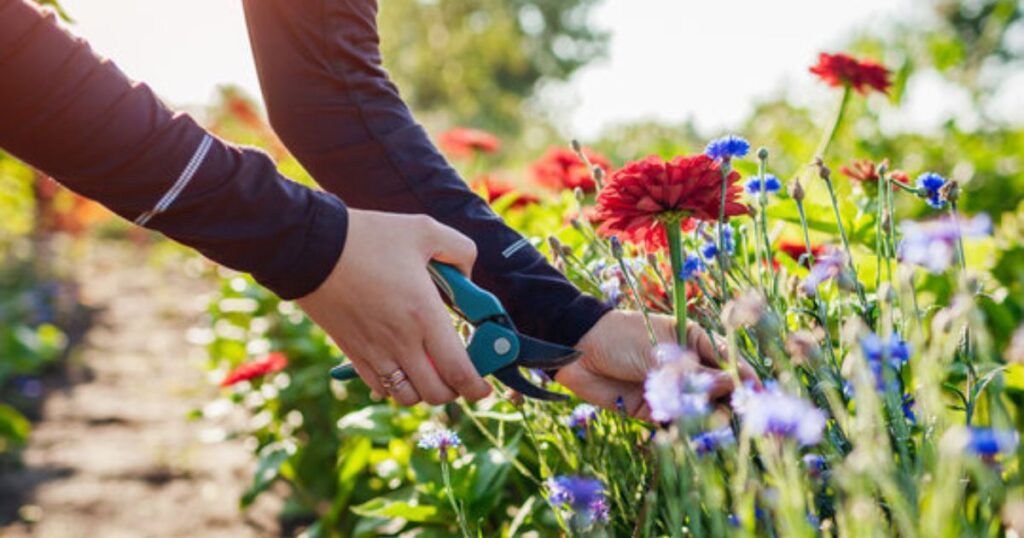 Harvesting zinnias for cut flowers is a rewarding way to enjoy their vibrant colors indoors. To ensure long-lasting blooms, harvest zinnias early in the morning when temperatures are cooler and the flowers are fully open but not et fading. Use sharp scissors or pruning shears to cut the stems at an angle, about 4 to 6 inches from the base, selecting healthy, sturdy blooms with firm petals.
Harvesting zinnias for cut flowers is a rewarding way to enjoy their vibrant colors indoors. To ensure long-lasting blooms, harvest zinnias early in the morning when temperatures are cooler and the flowers are fully open but not et fading. Use sharp scissors or pruning shears to cut the stems at an angle, about 4 to 6 inches from the base, selecting healthy, sturdy blooms with firm petals.
Remove any leaves that would fall below your vase’s water line to stop bacteria fr m growing. Immediately place the cut flowers in a container of clean, cool water to keep them fresh. Zinnias thrive as cut flowers due to their strong stems and bright, cheerful blooms, making them perfect for floral arrangements. Regular harvesting also encourages more blooms, so enjoy the vibrant beauty of zinnias inside your home throughout the season.
Saving Zinnia Seeds
If you want to grow zinnias again next year, you can save seeds from your healthiest plants:
- Choose Healthy Plants: Select vibrant, disease-free plants with desirable traits.
- Let Blooms Fade: Allow some flowers to dry on the plant until the petals shrivel and the flower head turns brown.
- Harvest Seeds: Cut the dried flower heads and gently crush them to release the seeds. Zinnia seeds are small, arrowhead-shaped, and grayish-brown.
- Store Properly: Place seeds in a paper envelope, label with the variety and date, and store in a cool, dry place.
Note: Seeds from hybrid zinnias may not produce plants identical to the parent, but open-pollinated or heirloom varieties (e.g., ‘California Giants’) are more reliable for seed saving.
Troubleshooting Common Zinnia Problems
Even with the best care, zinnias can encounter issues. Here’s how to address common problems:
- Yellowing Leaves: Often caused by overwatering or poo drainage. Check soil moisture and improve drainage if needed.
- Few or No Blooms: Could be due to insufficient sunlight, over-fertilizing with nitrogen, or lack of heading. Ensure 6–8 hours of sun and reduce nitrogen-rich fertilizers.
- Leggy Plants: Usually a result of too much shade or overcrowding. Thin plants and relocate to a sunnier spot if possible.
- Fungal Diseases: Powdery mildew or leaf spot can occur in humid conditions. Improve air circulation, avoid overhead watering, and apply a fungicide if necessary.
Fun Facts About Zinnias
To inspire your love for these flowers, here are some fascinating tidbits:
- Historical Significance: Zinnias were named after German botanist Johann Gottfried Zinn in the 18th century.
- National Flower: Zinnias are the national flower of Peru, symbolizing friendship and affection.
- Space Travelers: Zinnias were the first flowers grown in space, blooming aboard the International Space Station in 2016.
- Edible Petals: Zinnia petals are edible and can be used to garnish salads, though they’re slightly bitter.
Conclusion:
Planting zinnias is a rewarding endeavor that brings vibrant color and life to my garden. With their easy-going nature, adaptability, and stunning blooms, they’re perfect for gardeners of all skill levels. By following these steps—choosing the right varieties, preparing the soil, planting properly, and providing consistent care—you’ll enjoy a dazzling display of zinnias all summer long. Whether you’re creating a cutting garden, attracting pollinators, or simply brightening your backyard, zinnias are a surefire way to make your garden shine.
Thus, select your preferred zinnia kinds, put on your gardening gloves, and learn to plant! A rainbow of blooms will repay you with a bit of work and make your summer one to remember.
FAQ:
What are Zinnias?
Zinnias are vibrant, easy-to-grow annual flowers known for their bright, cheerful blooms. They provide gardens and containers with a pop of color and do well in warm climates.
When is the Best time to Plant Zinnias?
When the earth has warmed up, usually in late spring or early summer, after your area’s last frost date, plant zinnias.
Where should I plant Zinnias?
Choose a location that receives full sun (at least 6 hours of direct sunli ht daily). Well-draining soil is ideal for healthy growth.
How do I Prepare the soil for Zinnia Planting?
To improve the soil, loosen it up and add organic matter like compost. Good drainage and moderate fertility are ideal for zinnias.
How do I Plant Ainnia Seeds?
Sow seeds about ¼ inch deep directly into the soil. Space them 6 to 12 inches apart, depending on the variety, to allow good airflow.




